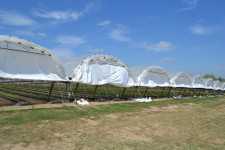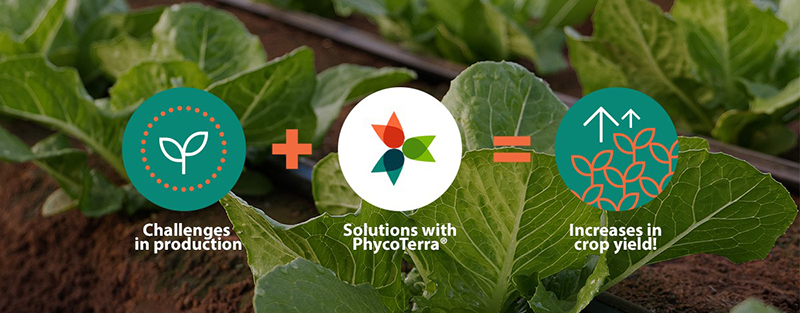Study: High Tunnels Yield Big Benefits For Florida Blueberry Growers

Results from a recently published University of Florida study shows high tunnels can shield valuable blueberry bushes from damaging cold and promote earlier fruit ripening.
Though the initial investment can run from $18,000 to $25,000 per acre plus labor, high tunnels deliver better quality fruit, bigger early yields, and higher prices if growers beat competitors to market, said Bielinski Santos, a UF/IFAS associate professor based at the Gulf Coast Research and Education Center in Balm.
The study, published in the current issue of HortTechnology, tracked two growing seasons on a commercial blueberry farm in Alachua County. The results showed that temperatures outside the tunnels plunged to freezing or near-freezing 61 times during the study. Temperatures fell that low just three times inside the unheated tunnels.
High tunnels may increase air and soil temperatures and protect the plants from wind and rain damage, leading to better flowering and more fruit, said Santos.
Plants grown in the tunnels produced about 4.5 tons of ripe fruit per acre by the end of March; no ripe fruit came from similar plants grown outdoors during that time. Wholesale prices for domestic blueberries are highest early in the season, starting at about $7 per pound in early April, he said. “The more fruit you can harvest early in the season, the more money you’ll make.”
Growers also can save money with high tunnels because they minimize the need for another freeze protection strategy – sprinkling the plants with water to form a layer of ice. In the study, tunnel-grown plants needed about one-tenth the water for freeze protection as plants grown outdoors.
The study involved two blueberry varieties developed at UF, Snow Chaser and Springhigh. Snow Chaser is especially well-suited to life in high tunnels, Santos said.
Santos said he knows of one Florida blueberry grower using high tunnels; the owners tried 2 acres in 2010 and later expanded to 80 acres. Others have expressed interest in the system.
Santos and co-author Teresa Salame-Donoso, a research associate at the Balm Center, have begun collecting data for an economic study on blueberry production in high tunnels. “We already have some numbers, and we’re collecting the kind of information growers need to make up their own minds about using high tunnels,” he said. “I see more people doing it eventually.”










